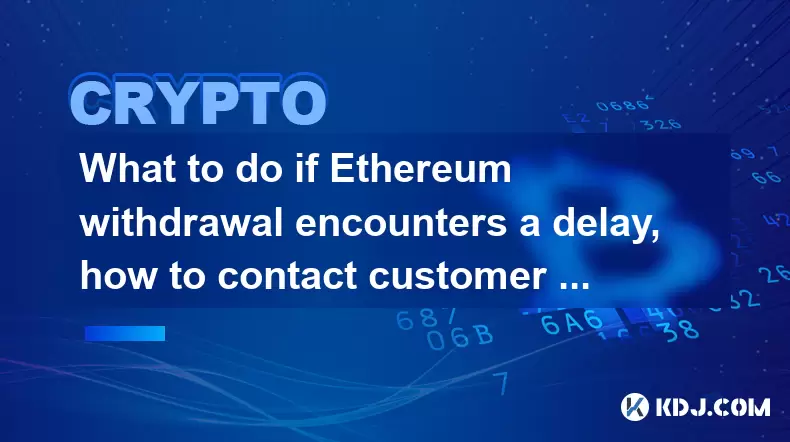-
 Bitcoin
Bitcoin $118300
-0.25% -
 Ethereum
Ethereum $4593
0.63% -
 XRP
XRP $3.099
-0.23% -
 Tether USDt
Tether USDt $1.001
0.09% -
 BNB
BNB $840.2
0.52% -
 Solana
Solana $192.6
-0.85% -
 USDC
USDC $0.0000
0.01% -
 Dogecoin
Dogecoin $0.2286
0.98% -
 TRON
TRON $0.3575
-0.50% -
 Cardano
Cardano $0.9437
1.93% -
 Hyperliquid
Hyperliquid $48.21
6.52% -
 Chainlink
Chainlink $22.33
-1.39% -
 Sui
Sui $3.826
0.89% -
 Stellar
Stellar $0.4272
0.26% -
 Bitcoin Cash
Bitcoin Cash $592.7
0.19% -
 Ethena USDe
Ethena USDe $1.001
0.06% -
 Hedera
Hedera $0.2528
0.25% -
 Avalanche
Avalanche $24.37
2.20% -
 Litecoin
Litecoin $120.5
-1.98% -
 Toncoin
Toncoin $3.493
2.53% -
 UNUS SED LEO
UNUS SED LEO $9.657
4.15% -
 Shiba Inu
Shiba Inu $0.00001293
-0.65% -
 Uniswap
Uniswap $10.93
-0.14% -
 Polkadot
Polkadot $3.981
-1.15% -
 Dai
Dai $1.000
0.03% -
 Bitget Token
Bitget Token $4.627
1.22% -
 Cronos
Cronos $0.1545
0.86% -
 Ethena
Ethena $0.7319
1.41% -
 Aave
Aave $309.9
-1.09% -
 Pepe
Pepe $0.00001108
-1.40%
What to do if Ethereum withdrawal encounters a delay, how to contact customer service
If your Ethereum withdrawal is delayed, check the transaction status on the platform and blockchain explorer before contacting customer service with all relevant details.
May 12, 2025 at 05:42 pm

When dealing with Ethereum withdrawals, encountering delays can be frustrating and concerning. Understanding the reasons behind these delays and knowing how to effectively contact customer service can help resolve the issue more efficiently. This article will guide you through the steps to take if you experience a delay in your Ethereum withdrawal and how to reach out to customer service for assistance.
Understanding Ethereum Withdrawal Delays
Ethereum withdrawal delays can occur due to several reasons. The most common causes include high network congestion, insufficient gas fees, or issues with the exchange or wallet platform you are using. Network congestion happens when there are too many transactions waiting to be processed on the Ethereum blockchain, leading to slower transaction times. Insufficient gas fees can result in your transaction being stuck in the mempool, waiting for a miner to pick it up. Additionally, technical issues or maintenance on the platform you are using can also cause delays.
Checking the Status of Your Ethereum Withdrawal
Before reaching out to customer service, it's important to check the status of your Ethereum withdrawal. Here are the steps you can take:
- Log into your account on the exchange or wallet platform where you initiated the withdrawal.
- Navigate to the transaction history or withdrawal section to find your specific transaction.
- Check the transaction status. If it shows as "pending" or "processing," it might still be in the queue.
- Use a blockchain explorer like Etherscan to enter your transaction hash and see its current status on the blockchain.
If the transaction is still pending and you've waited a reasonable amount of time, it might be time to contact customer service.
How to Contact Customer Service for Ethereum Withdrawal Issues
When you need to contact customer service regarding an Ethereum withdrawal delay, it's crucial to have all the necessary information ready. Here's how you can reach out effectively:
- Gather your transaction details: Have your transaction ID, the amount of Ethereum you attempted to withdraw, and the date and time of the transaction ready.
- Choose the right communication channel: Most platforms offer multiple ways to contact customer service, such as live chat, email, or phone support. Check the platform's support page to see which method is available and recommended.
- Prepare your message: Clearly state the issue you are facing, including the transaction details and any error messages you've received. Be concise but provide all relevant information.
Using Live Chat for Immediate Assistance
If your platform offers live chat support, this can be the fastest way to get help with your Ethereum withdrawal delay. Here's how to use it effectively:
- Log into your account and navigate to the live chat support section.
- Initiate a chat by clicking on the appropriate button or link.
- Provide your transaction details immediately to the customer service representative.
- Explain the issue clearly and ask for an update on the status of your withdrawal.
- Follow any instructions given by the representative, such as providing additional information or waiting for further updates.
Sending an Email for Detailed Assistance
If live chat is not available or you prefer a more detailed communication, sending an email can be a good option. Here's how to do it:
- Find the customer service email address on the platform's support page.
- Compose your email with a clear subject line, such as "Ethereum Withdrawal Delay - Transaction ID: [Your Transaction ID]."
- In the body of the email, provide your full name, account details, and a detailed description of the issue. Include the transaction ID, the amount of Ethereum, and the date and time of the withdrawal.
- Attach any relevant screenshots or error messages you've encountered.
- Send the email and wait for a response. Keep an eye on your inbox for any updates or requests for additional information.
Using Phone Support for Urgent Issues
Some platforms offer phone support for urgent issues. If your Ethereum withdrawal delay is causing significant concern, you might want to use this option. Here's how to proceed:
- Find the customer service phone number on the platform's support page.
- Call the number and be prepared to provide your account details and transaction information.
- Explain the issue clearly and concisely to the representative.
- Follow any instructions given by the representative, such as providing additional information or waiting for further updates.
What to Do While Waiting for a Response
While waiting for a response from customer service, there are a few things you can do to monitor the situation:
- Continue to check the transaction status on the platform and using a blockchain explorer.
- Keep an eye on your email for any updates or requests for additional information from customer service.
- Stay patient but persistent. If you haven't received a response within a reasonable timeframe, consider following up through another channel.
Frequently Asked Questions
Q: Can I cancel a delayed Ethereum withdrawal?
A: Whether you can cancel a delayed Ethereum withdrawal depends on the platform and the current status of the transaction. If the transaction is still pending on the platform, you might be able to cancel it through your account. However, if it has already been broadcast to the blockchain, you will need to wait for it to be processed or contact customer service for assistance.
Q: How long should I wait before contacting customer service about a delayed Ethereum withdrawal?
A: The waiting time can vary depending on the platform and the current network conditions. Generally, if your withdrawal is still pending after 24 hours, it's a good idea to contact customer service. However, if you see that the network is experiencing high congestion, you might want to wait a bit longer before reaching out.
Q: Can I speed up a delayed Ethereum withdrawal by increasing the gas fee?
A: If your transaction is stuck due to an insufficient gas fee, you might be able to speed it up by increasing the gas fee. This process is called a "gas bump." However, not all platforms support this feature, and you will need to check with your specific platform to see if it's possible. If it is, you can usually find the option in your transaction history or withdrawal section.
Q: What should I do if customer service is unresponsive?
A: If you find that customer service is unresponsive, try reaching out through a different channel, such as switching from email to live chat or phone support. If all else fails, consider posting about your issue on the platform's community forums or social media channels to seek help from other users or to get the attention of the platform's support team.
Disclaimer:info@kdj.com
The information provided is not trading advice. kdj.com does not assume any responsibility for any investments made based on the information provided in this article. Cryptocurrencies are highly volatile and it is highly recommended that you invest with caution after thorough research!
If you believe that the content used on this website infringes your copyright, please contact us immediately (info@kdj.com) and we will delete it promptly.
- Kazakhstan's Crypto Leap: Bitcoin ETF and Central Asia's Digital Finance Future
- 2025-08-13 12:45:19
- BlockDAG Presale Blazes Past $371M: Fundraising Frenzy Fuels Crypto Sensation
- 2025-08-13 13:05:21
- Meme Coins: Chasing the 2025 Surge – Which Will Moonshot?
- 2025-08-13 10:25:23
- Bitcoin's Wild Ride: Rally, Pullback, and What's Next
- 2025-08-13 10:25:23
- Bitcoin, Bitmax, and Institutional Demand: A New Era of Crypto Investment
- 2025-08-13 10:45:12
- Solana, ROAM, and Airdrops: What's the Buzz in 2025?
- 2025-08-13 11:35:13
Related knowledge

How to purchase Aragon (ANT)?
Aug 09,2025 at 11:56pm
Understanding Aragon (ANT) and Its PurposeAragon (ANT) is a decentralized governance token that powers the Aragon Network, a platform built on the Eth...

Where to trade Band Protocol (BAND)?
Aug 10,2025 at 11:36pm
Understanding the Role of Private Keys in Cryptocurrency WalletsIn the world of cryptocurrency, a private key is one of the most critical components o...

What is the most secure way to buy Ocean Protocol (OCEAN)?
Aug 10,2025 at 01:01pm
Understanding Ocean Protocol (OCEAN) and Its EcosystemOcean Protocol (OCEAN) is a decentralized data exchange platform built on blockchain technology,...

How to invest in Kyber Network Crystal v2 (KNC)?
Aug 12,2025 at 05:21pm
Understanding Kyber Network Crystal v2 (KNC)Kyber Network is a decentralized liquidity hub built on the Ethereum blockchain that enables instant token...

Where can I buy UMA (UMA)?
Aug 07,2025 at 06:42pm
Understanding UMA and Its Role in Decentralized FinanceUMA (Universal Market Access) is an Ethereum-based decentralized finance (DeFi) protocol design...

How to sell my Ren (REN) tokens?
Aug 13,2025 at 11:35am
Understanding REN Tokens and Their Role in Decentralized FinanceREN is an ERC-20 token that powers the Ren protocol, a decentralized interoperability ...

How to purchase Aragon (ANT)?
Aug 09,2025 at 11:56pm
Understanding Aragon (ANT) and Its PurposeAragon (ANT) is a decentralized governance token that powers the Aragon Network, a platform built on the Eth...

Where to trade Band Protocol (BAND)?
Aug 10,2025 at 11:36pm
Understanding the Role of Private Keys in Cryptocurrency WalletsIn the world of cryptocurrency, a private key is one of the most critical components o...

What is the most secure way to buy Ocean Protocol (OCEAN)?
Aug 10,2025 at 01:01pm
Understanding Ocean Protocol (OCEAN) and Its EcosystemOcean Protocol (OCEAN) is a decentralized data exchange platform built on blockchain technology,...

How to invest in Kyber Network Crystal v2 (KNC)?
Aug 12,2025 at 05:21pm
Understanding Kyber Network Crystal v2 (KNC)Kyber Network is a decentralized liquidity hub built on the Ethereum blockchain that enables instant token...

Where can I buy UMA (UMA)?
Aug 07,2025 at 06:42pm
Understanding UMA and Its Role in Decentralized FinanceUMA (Universal Market Access) is an Ethereum-based decentralized finance (DeFi) protocol design...

How to sell my Ren (REN) tokens?
Aug 13,2025 at 11:35am
Understanding REN Tokens and Their Role in Decentralized FinanceREN is an ERC-20 token that powers the Ren protocol, a decentralized interoperability ...
See all articles

























































































